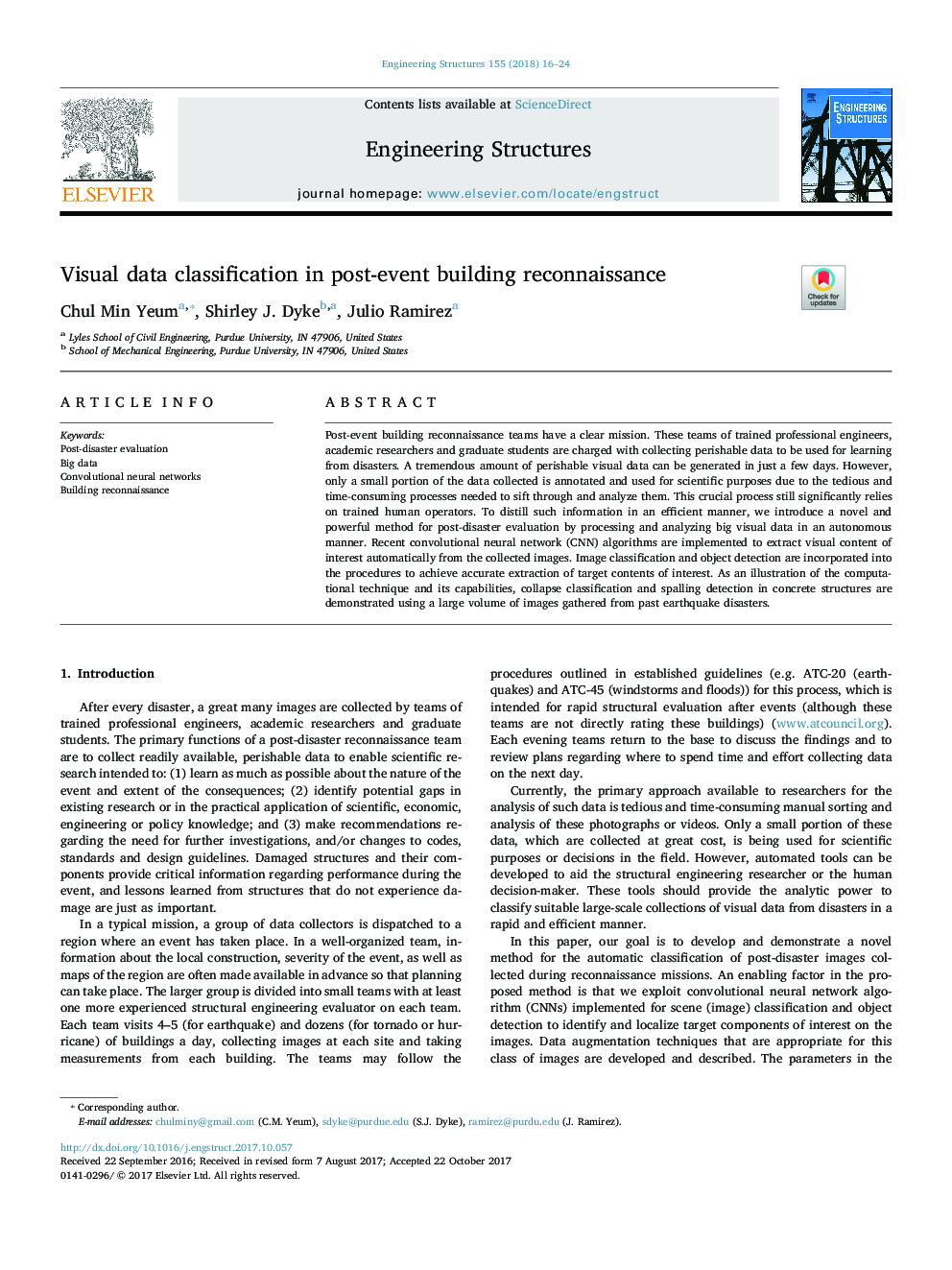| Article ID | Journal | Published Year | Pages | File Type |
|---|---|---|---|---|
| 6739007 | Engineering Structures | 2018 | 9 Pages |
Abstract
Post-event building reconnaissance teams have a clear mission. These teams of trained professional engineers, academic researchers and graduate students are charged with collecting perishable data to be used for learning from disasters. A tremendous amount of perishable visual data can be generated in just a few days. However, only a small portion of the data collected is annotated and used for scientific purposes due to the tedious and time-consuming processes needed to sift through and analyze them. This crucial process still significantly relies on trained human operators. To distill such information in an efficient manner, we introduce a novel and powerful method for post-disaster evaluation by processing and analyzing big visual data in an autonomous manner. Recent convolutional neural network (CNN) algorithms are implemented to extract visual content of interest automatically from the collected images. Image classification and object detection are incorporated into the procedures to achieve accurate extraction of target contents of interest. As an illustration of the computational technique and its capabilities, collapse classification and spalling detection in concrete structures are demonstrated using a large volume of images gathered from past earthquake disasters.
Related Topics
Physical Sciences and Engineering
Earth and Planetary Sciences
Geotechnical Engineering and Engineering Geology
Authors
Chul Min Yeum, Shirley J. Dyke, Julio Ramirez,
